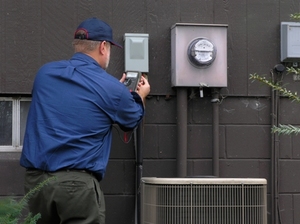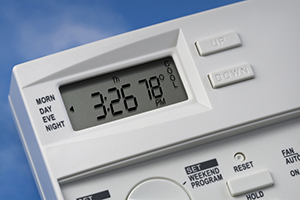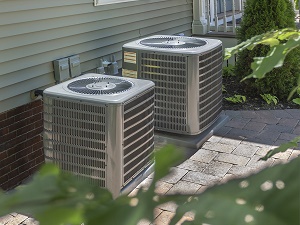HVAC Balancing Helps Evenly Distribute The Ideal Room Temperature
Date: October 26, 2018
WHY IS HVAC BALANCING IMPORTANT FOR YOUR HOME?
So… what even is HVAC balancing? It’s a juggling act your HVAC system performs every day (or hopefully it does). It’s the art of being in the downstairs living room to a cool 78 degree Fahrenheit and then going upstairs to your bedroom to (drum roll please)… a cool 78 degrees Fahrenheit!
Basically, it’s setting your ideal room temperature and actually being able to experience that ideal temperature all throughout your home. So when we talk about balancing, what we refer to is the pressure your system goes through to ensure that your house feels balanced. When your home was first built, the system should have been balanced; however, with redecorating, remodeling, etc., things may have become unbalanced.
If there are things getting in the way (such as a newly installed door, easy-to-heat computer monitors, whatever they may be), imbalances may be present that forces your HVAC system to inefficiently work harder (meaning you pay more) for a home with inadequate A/C in some rooms and frigid air in other rooms.
So… what is the ideal room temperature for me?
I’d consider this step one in HVAC balancing tests. Once you’re comfortable with the room temperature in your home, you can then visit other rooms and see if you’re still comfortable. If not, you might need to look into rebalancing your HVAC system.
Because Arizona can get really hot especially during the summertime, the cost to lower the temperature in your home is exponentially higher. ARP recommends the lowest you should set your AC to be is 79 degrees. SRP puts it at 78 degrees. A trick they recommend is turning on the fan, which should make the rooms feel 5 degrees cooler. Why? Well, SRP estimates that almost half of your electricity bill during the summer is attributed to the AC system.
If your room is still a bit hot, lower it by increments of 1 degree until your comfortable (or comfortable enough). Just watch your electricity bill though.
Okay, I like the room temperature. Now what?
You’re probably here because you had some inclinations that your HVAC system might not be balanced. If you want to conduct a DIY HVAC test, walk around the house and sit in various rooms for a minute or so. Does the air feel different? Or you cold downstairs, hot upstairs? Is one room simply frigid and the other burning up? If you want more exact measurements, bring a thermometer with you and let it sit for a while. And if you are noticing some air cooling differences, we got some work to do.
If you were to go with the DIY HVAC rebalancing option, you’d have a few options that should ease the heating and AC differences; however, you’d want to go to the local HVAC company for such a big task. Regardless, here are some things you’d be able to do.
Offset your rooms. If you have different thermostats for the upstairs and downstairs, odds are the cool air is going to flow downwards. You may want to try setting the upstairs thermostat 2 degrees or so cooler than your downstair thermostat unit and see if things are balanced out. This offers a balanced home without costing you too much in the long run as your AC unit isn’t forced to exert air all across your home for the temperatures you’re looking for.
Clean your filters. One very common symptom of an unbalanced house is unchecked filters, air vents, and air ducts. Make sure everything is clean so you can hopefully get a more balanced HVAC system.
Clear your vents. One common problem for HVAC balancing is that you may have moved around furniture, remodeled your home, tore down some walls, built new ones, whatever… only causing complications for your HVAC balancing system. If you want to get your room temperature back to a comfortable standard, make sure that there are no obstructions getting in the way of your AC vents, air ducts, and more.
If none of these solutions are working for you, it may be time to call a professional who can run a diagnostic test, generate some solutions, and rebalance your home for you.



